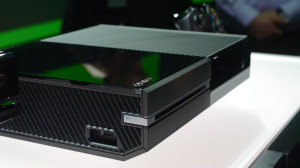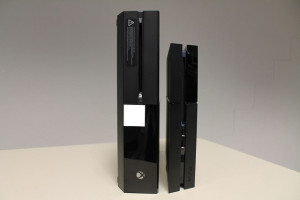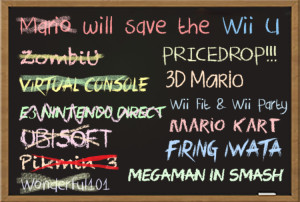Microsoft’s 180 Is Now Complete
Lusipurr.com has long been predicting that Microsoft would eventually be forced to abandon the Kinect in order to better compete with Sony’s PS4, and it would seem this week that particular penny has finally dropped, as Microsoft have announced plans to drop the Kinect and offer the Xbone at a $399 price-point, the same price-point as the PS4. It is funny to think that within the span of six months Microsoft has managed to annul everything that the Xbone stood for. The two central pillars of the Xbone strategy were to be its always-on status, and its media functionality – both of which are now gone. Sure, the Xbone still has media pass-though capabilities, yet without Kinect it is difficult to see how the media capabilities will be of any particular benefit. Talking about Kinect navigation, navigating the Xbone dashboard with a control pad has been a shambles since launch, so it seems likely that the Kinectless Xbone will have a pretty bumpy roll-out when it hits the market on June 9.
The Xbone console is undoubtedly a more appealing proposition without the always-on ecosystem, and it is assuredly a better proposition without Kinect, but without those two quirks it has suddenly lost any differentiating factor to separate it from the PS4, with the only point of difference now being that the system’s GPU is significantly weaker than that of the PS4. To this end the absence of Kinect may presumably help a little in time, owing to the fact that the Kinect reserved ten percent of the Xbone’s GPU, yet any boost which comes from freeing up more in the way of GPU resources is unlikely to be much of a game-changer in the Xbone’s fight against the PS4.
One-Eighty Degrees of Spin
Probably the funniest thing to come out of this week’s announcement, other than the comprehensive debasement of Microsoft’s initial gameplan, has been the corporate BS aimed at saving face from this colossal u-turn. Yusef Mehdi was actually able to announce with a straight face that all of the Xbox 360’s current user-base of eighty million gamers are wanting to trade-up to Xbone just as soon as it becomes affordable. This is more than a little confusing given the epic number of 360 owners who have made the PS4 their console for the duration of the generation:
“We have 80-plus million Xbox 360 users today who want an Xbox One, and many of them tell us, ‘For me, it’s an affordability issue. I’m gonna get there, it’s just a question of time. If you make it more affordable, then I’ll upgrade faster.’ So this is an opportunity to really make it easier for them to get there at their pace.”
Given the substantial lead that Sony’s PS4 has been able to amass over the Xbox One, one might be forgiven for thinking that this move has been made in direct response to Sony’s sales domination, but not so according to Microsoft. No, to Microsoft the inclusion of Kinect has been so successful in positively defining the Xbone that it now makes sense to dispense with it entirely [?!]:
“For us, it has not really been about that. First, it’s about that aforementioned choice. Second, the folks at Xbox feel as though, at this point, they’ve completed their goal of “defining a next-generation console.” As such, moving on makes sense (to Microsoft, anyway).”
Do not attempt to think too deeply on this, as it is liable to do your head in. Decoupling the Kinect from the Xbone is obviously a ploy to sell more Xbone units on account of the symbiotic growth known as ‘Kinect’ being a dismal failure. In fact the entire concept of motion controls has been pretty much discredited at this point, as the entire lifespan of the Wii was only able to produce a small handful of games where motion controls could truthfully be regarded as anything more than obtrusive and regrettable.
It was not just Microsoft who were grappling to find the words to express their humiliation this week, as arguably the biggest losers from this announcement were the studios who are currently in the midst of developing Kinect exclusive software [along with anyone foolish enough to have bought into the console on the promise of motion-controlled gaming]. Harmonix, who are currently working on Fantasia: Music Evolved [a Kinect-only game], responded caustically to the news, while Paul Mottram, the head developer of Zumba Fitness, responded with some considerable regret:
“From a developer point of view it’s a shame, as it all but kills the chances of making an original Kinect title unless it is a major licensed Fitness or Dance product – and even those will suffer as it’s unlikely we’ll see Kinect 2 units even come close to the installed base of the original now. Even then it was a challenge.
I just feel sorry for those developers who had Kinect titles in development who’ve had the rug pulled from beneath them and may now stand little chance of seeing a return on their investment.”
The sales of the original Kinect was a massive fad, meaning that its successor has next to no chance of ending up as a viable platform in its own right. It is very tempting to dismiss any grievances on account of these awful games serving no legitimate purpose in existing, yet one must at least concede that it is fairly shitty on the part of Microsoft to promise these developers that every Xbone owner will have the means to play their game, and then renege on that undertaking. At the very least this should mean that motion-controls can stop being a thing now, a sentiment that is certain to meet the approval of Lusipurr.com readers, by-and-large.
Nintendo Continues to Flounder
Embattled Nintendo president Satoru Iwata has this week raised eyebrows during an investor question and answer session by suggesting that the fortunes of the near-stillborn Wii U could be reversed by the release of a single game. Iwata likened the situation to that of the OG Game Boy before and after the release of Pokemon, which is as preposterous as it is ludicrous, given that the Game Boy was already an established and highly popular system at the time:
“The fate of a video game system is often influenced greatly by the introduction of a single title. As many of you probably remember, before the release of the Pokémon game, Game Boy had been showing slow growth, and many people wondered whether it was the end of Game Boy. But the Pokémon game singlehandedly changed the landscape of the system, which then started to show the strongest sales in the lifecycle of the system.”
As far as wishful thinking goes, this one was a bit of a stretch even for Iwata. As the recriminations and calls for resignation around him grow, Iwata must be running desperately low on excuses to try and liken one of Nintendo’s least successful systems to one of their most successful systems. And it is not just himself that Iwata is having to protect now, but the Wii U itself. Iwata understands that it would be utterly catastrophic for Nintendo’s long term viability if the company were to abandon the Wii U now, but that is not exactly a message that can be understood by a room full of investors, who are all overanxious for Nintendo to move on to their next console. When asked whether Nintendo was hard at work on the Wii U’s successor Iwata responded thusly:
“I of course believe that launching new hardware will not produce good results unless we first make sure that those who have already purchased our platforms are satisfied. We will continue to work hard to ensure that consumers who already own our platforms are satisfied, and make sure that people will continue to see great value in our software, but I would like to say that we are preparing for our next hardware system, and in fact, we already have a clear idea to some extent about the direction our next hardware is going to take.”
It sounds as if Nintendo could be launching their next console in 2016 or 2017 if all goes according to plan. That date likely could not come soon enough for jaded investors, though they might see their fondest wish of killing off the Wii U fulfilled well before then if Philips is successful in getting the Wii U banned from sale in America.


